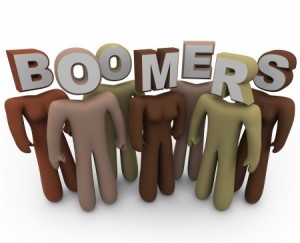By Rose O. Sherman, EdD, RN, FAAN
 Several years ago, I attended a World Futurist Conference where an interesting question was asked about what data we tend to overlook as plan for the future. The futurist speaker quickly answered that what is often overlooked is the power of population demographics. “Demographics matters in all aspects of human life from education to crime, health care, jobs and the social safety net…….ignore it at your peril”, he said. People underestimate the importance of population shifts. …….they assume that age cohorts remain more or less uniform over time but this is not true.
Several years ago, I attended a World Futurist Conference where an interesting question was asked about what data we tend to overlook as plan for the future. The futurist speaker quickly answered that what is often overlooked is the power of population demographics. “Demographics matters in all aspects of human life from education to crime, health care, jobs and the social safety net…….ignore it at your peril”, he said. People underestimate the importance of population shifts. …….they assume that age cohorts remain more or less uniform over time but this is not true.
I thought back to his comments as I read an article that was recently published in Hospitals and Health Networks on The Boomer Challenge and You. The article cites a startling statistic – 3 million Baby Boomers will turn 65 every year for the next 20 years. It is described in the article as the most powerful force operating in our health care system right now. This is true at a number of levels. Not only will the Baby Boomers need care and be enrolling in Medicare in large numbers but they will also be exiting the health care workforce. There are roughly 75 million in the Baby Boomer cohort as opposed to 48 million in Generation X and 78 million in Generation Y.
Impact on Health Care
It is thought that the Baby Boomers will change the health care delivery system because their preferences for care delivery may be very different than previous generations. Patient engagement will become more of an imperative as will the need for better geriatric services. In the populations over 65, it has been noted that 69% will need some form of long-term care as they age but cost, quality and access to these services are likely to be problematic. Long-term care leaders are already seeing a change in preferences and have observed that while Baby Boomers have placed their parents in nursing homes – they resist doing this for themselves. The need for care will clearly grow in settings all across the healthcare continuum.
The Health Care Workforce
The effect of Baby Boomer retirements is only beginning to have impact on the nursing workforce. Generation Y nurses now comprise 15% of the nursing workforce but numbers are now beginning to shift with more nurses under the age of 30. it is anticipated that Generation Y will be 50% of the nursing workforce by 2020. Like the Baby Boomers before them, the sheer size of this generation means that they will have a powerful impact on the future of healthcare.
My state of residence – Florida – is considered a bellwether state for what this change could look like. Our population continues to grow as aging Baby Boomers are now moving South and we will soon overtake New York as the third largest state. A recent report from our Florida Center for Nursing which tracks workforce trends indicates that the largest sector for nursing workforce growth is in the homecare segment. For the first time in over five years, turnover among nurses is trending up in hospitals as are vacancy rates. New RN positions are being created each year. Vacancies for faculty positions in the state are climbing as aging faculty retire.
A key point here is that we need to closely monitor the trends. Things in healthcare are slowly and subtly shifting in a different direction. What is true today about the workforce may not necessarily be true in 2 or 3 years and we need to be prepared to lead through the change. The futurist was right – ignore demographics and you may be missing an important part of what is needed for futures planning.
Read to Lead
Florida Center for Nursing (January 2014). Demand for nurses in Florida: The 2013 survey of Florida Nurse Employers.
© emergingrnleader.com 2014


 LinkedIn
LinkedIn Instagram
Instagram